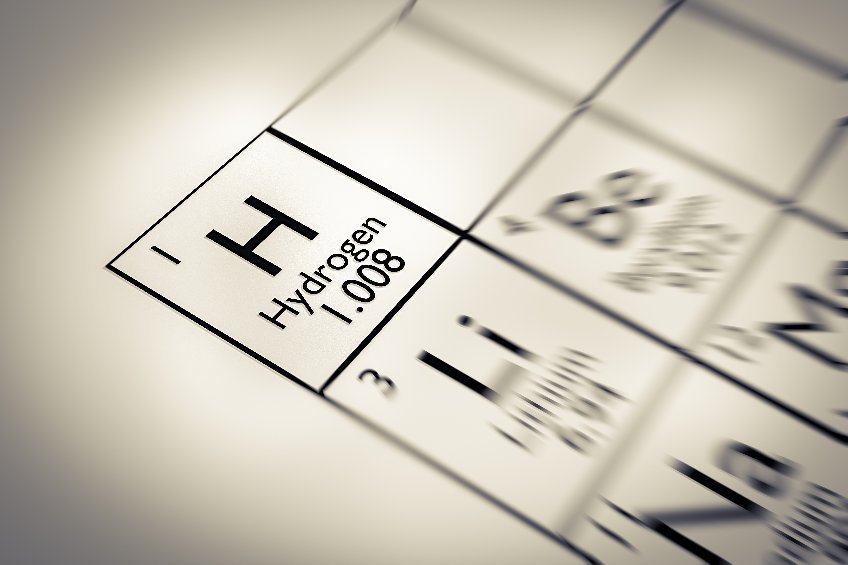World leaders promote hydrogen as a possible low-emissions fuel for transportation and industry, and several nations have announced hundreds of billions of dollars in subsidies to support the development and supply of hydrogen. But will governments be able to create a new green hydrogen fuel industry?
When hydrogen burns, the only combustion product is water vapor. Net zero advocates, such as the International Energy Agency, propose that green hydrogen be used as fuel in place of natural gas and coal in industry and transportation. But, the problems with existing hydrogen technology are many.
For all practical purposes, a hydrogen fuel industry does not exist today. Ninety-five million tons of hydrogen is produced annually by steam methane reforming using natural gas or coal gasification methods. But, the vast majority of hydrogen is not used as fuel. It is used on-site as feedstock for industrial processes.
Chemical and refining industries, for example, use hydrogen to generate ammonia or methanol. The steel industry uses hydrogen as a reducing agent to produce direct reduced iron. Hydrogen feedstock made from natural gas or coal is inexpensive, with a cost as low as $1 per kilogram.
Instead of using natural gas or coal, hydrogen advocates propose to use wind and solar electricity to produce “green” hydrogen by electrolysis of water. They also propose to create a new hydrogen fuel industry and to ship hydrogen around the world through pipelines or ships. But hydrogen from electrolysis is very expensive to produce and very difficult to transport.
To produce a kilogram of hydrogen by electrolysis, electricity alone costs $3 to $6 per kilogram, resulting in a total cost of at least $5 per kilogram. This makes hydrogen from electrolysis more than five times as expensive as hydrogen made from natural gas or coal.
Nevertheless, nations are rushing to try to establish a leadership position in a new green hydrogen fuel industry. The Biden administration has awarded grants to firms to establish seven regional hubs to produce green hydrogen. Germany, India, and Japan have announced national strategies to produce and export hydrogen. Forty-one countries now have a green hydrogen strategy in place.
More than $280 billion in government subsidies have been announced to try to create a green hydrogen industry that, according to the IEA, totaled only a minuscule $1.4 billion in 2022. Advocates propose to use of hydrogen fuel in heavy industry, transportation, and even homes.
Cement, chemicals, plastics, and steel industries are urged to use hydrogen fuel in furnaces and other energy-intensive processes. To date, these efforts have been experimental. Little green hydrogen exists to fuel these industries. In addition, the amount of electricity needed from wind and solar systems to drive electrolyzers to produce green hydrogen for heavy industry is huge.
It has been estimated that the incremental renewable electricity needed to produce hydrogen fuel just for the steel industry is larger than the world’s total current output of renewable electricity. The amount of renewable electricity needed to drive electrolyzers to produce hydrogen for the chemical industry is three times as large as what is needed for steel.
Hydrogen vehicle fleets remain tiny. In 2022, only 70,000 hydrogen fuel-cell vehicles operated across the world, compared to more than 30 million electric vehicles and about 1.5 billion gasoline or diesel vehicles. Hydrogen fuel use is small but growing in niche markets, such as buses, trains, and factory forklifts. But, the performance of hydrogen vehicles is spotty.
California has a network of 65 hydrogen fueling stations, the only such network in the U.S. But after tens of millions of dollars in state subsidies, only about 12,000 hydrogen cars drive on California roads, less than one of every 1,000 vehicles. A hydrogen fuel shortage in Southern California makes it hard to refuel vehicles. Hydrogen vehicle fuel remains more expensive than gasoline and is hard to find.
Not only is green hydrogen expensive to produce, but hydrogen is difficult to transport. Hydrogen must be supercooled to minus 253 degrees Celsius to liquify it or must be super-pressurized to 700 atmospheres, about 300 times the air pressure in your car tire. Even at 700 atmospheres of pressure, hydrogen at a filling station requires storage tanks with seven times the volume of gasoline to store the same energy.
Hydrogen pipeline networks do not exist, and transporting hydrogen by ship is also very expensive. For the world to use hydrogen fuel, the production, pipeline, and ship transport industries would all need to be established. This is unlikely to happen in most people’s lifetimes.
Some have even advocated the use of hydrogen for home heating. But hydrogen is nature’s smallest molecule, is prone to leaks, and will ignite with low energy levels, such as static electricity. Some years ago, lightning struck our house, damaging appliances and causing a leak in our natural gas line. We soon smelled gas and were able to repair the leak without further damage. Had that been a hydrogen line, the leak would likely have exploded or burst into flame, destroying our house. Hydrogen lines to homes and gas stations involve dangerous safety risks.
Today, hydrogen is used on-site, but governments now want to create a new hydrogen fuel industry using market intervention, mandates, and massive subsidies. But, physics and economics strongly oppose the development of a green hydrogen fuel industry. Get ready for a spectacular failure of these government-sponsored efforts.
This article originally appeared in The Washington Examiner
